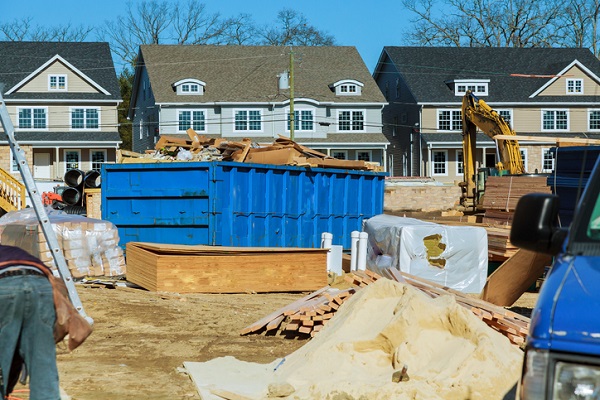Which structural claims are the most expensive for builders?
Structural claims are expensive for builders. The average claim can cost builders $42,000 in low-risk states and $113,000 in high-risk states. But one kind of structural claim is not only more expensive than average but also a sign of even more severe problems. Today, we’ll look at the issue of early development structural claims, what causes them, and what you can do to address them.
What is an early development structural claim?
An early development structural claim is a structural claim that occurs within the first three years after selling a newly built home. According to Walt Keaveny—Risk Manager and Principal Engineer with 2-10 Home Buyers Warranty (2-10 HBW)—over 70% of structural claims occur four or more years after the date of sale. However, that shouldn’t lull builders into a sense of complacency.
When early development structural claims occur, it’s typically a sign of even more severe problems. And the conditions that cause early development claims on one lot often appear in many other lots within the same development. And the kicker? According to Keaveny, the average early development claim costs 33% more to repair than the average of all claims.
Knowing when early development claims typically happen and how much they cost is important, especially for builders who keep financial reserves to pay claims. Given how costly and widespread they can be when they occur, builders must have a solution if this problem were to occur (more on that later). But what causes early development claims in the first place?
What can cause early development claims?
Perhaps the worst thing about early development claims is that if there’s one, there’s like to be many within the same development. Keaveny notes that many of these claims stem from the performance of active soils on the home’s foundation. Water content within these soils often changes over time. These changes can cause the soil to swell—which causes heave—or shrink, which causes settlement. These soil movements cause movement in the foundation. It’s the movement in the foundation, which is rarely uniform, that leads to many early development structural claims.
There are several things that cause heave and settlement, and some of them take many years to develop. But in terms of early development claims, there are three main culprits. The first is significant drainage problems. If water cannot properly drain away from the foundation, it can shift the soil and cause voids to form. The second cause is over-irrigation of the surrounding landscaping, which can cause similar problems.
The third cause is a bit more controllable for builders—improperly compacted fill material. This is not only a primary cause of early development claims but also the leading cause of residential structural failures. You can learn more about the problems improperly compacted structural fill can cause and what you can do to prevent it here.
How can you address early development structural claims?
A strategy for reducing the likelihood of early development structural claims is to work closely with your engineer. Your engineer can help you spot the kinds of issues that can cause early development claims. Where possible, identify drainage issues early in the process. And there are several things you can do to prevent improperly compacted structural fill from causing problems:
- Use fill material of the correct density and quality.
- Check for existing, unreported fill before purchasing land for development.
- Use a soil compactor to compact your fill, not a bulldozer.
In addition to these actions, consider a structural warranty from 2-10 Home Buyers Warranty (2-10 HBW). A structural warranty from 2-10 HBW provides industry-leading, insurance-backed coverage for structural defects, including those caused by heave or settlement. It relieves you of all obligations to investigate, adjust, and repair qualified structural defects. Plus, 2-10 HBW has a team of professional licensed adjusters, engineers, and repair contractors that investigates these claims, determines the cause(s), develops engineered plans of repair, and ultimately makes structural repairs to the home.
When early development claims occur, they can be prohibitively expensive. But purchasing a structural warranty from 2-10 HBW can protect your home buyers and your profit, letting you do what you do best—build high-quality homes.
Learn how you can protect your business and add valuable selling points to your new builds with a 2-10 HBW structural warranty.
Special thanks to Walt Keaveny, whose expertise inspired this article.








